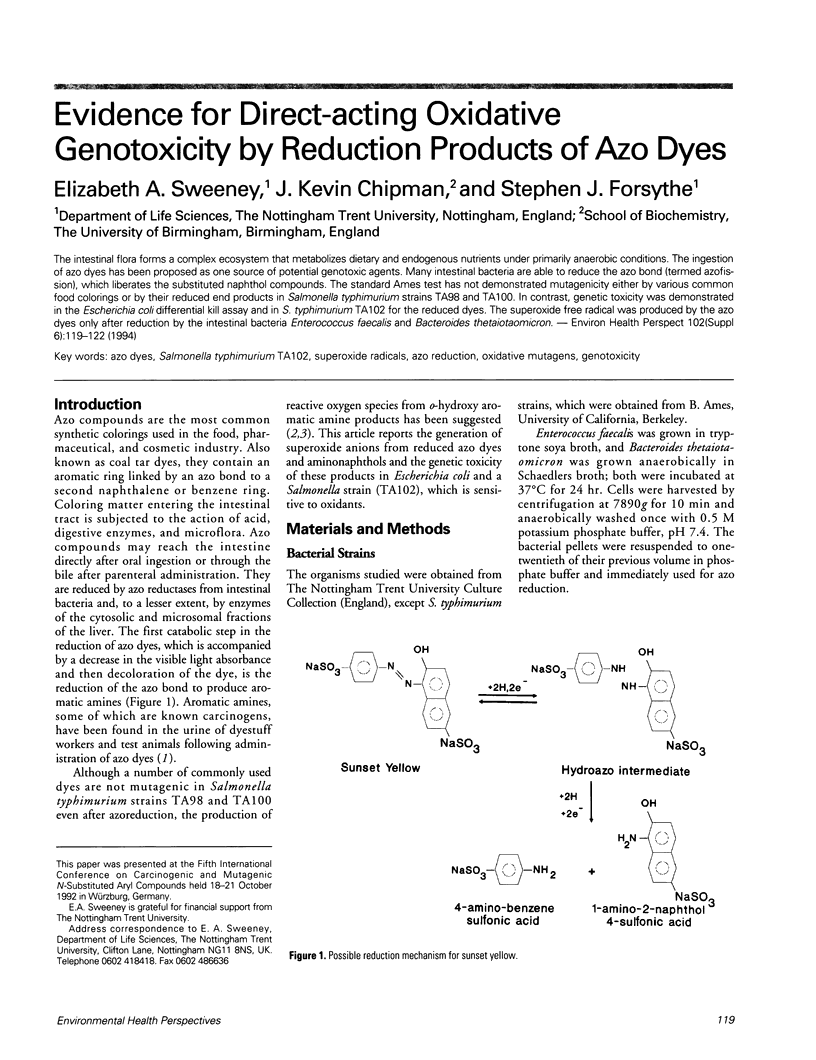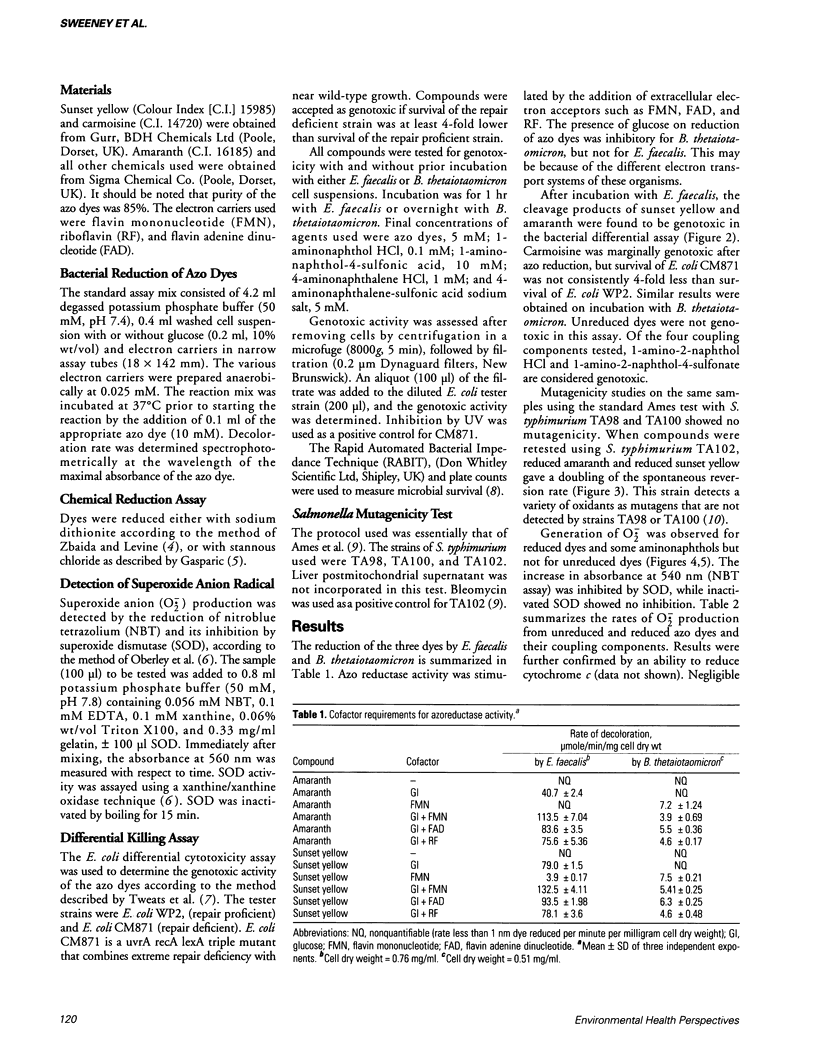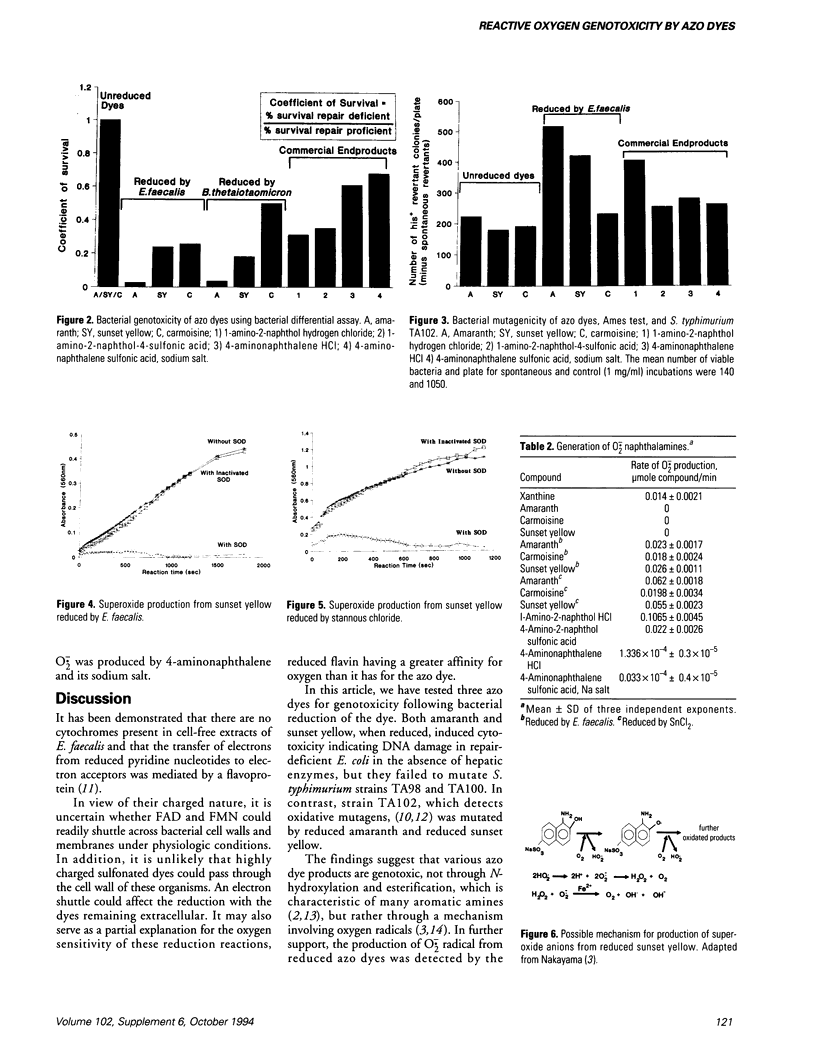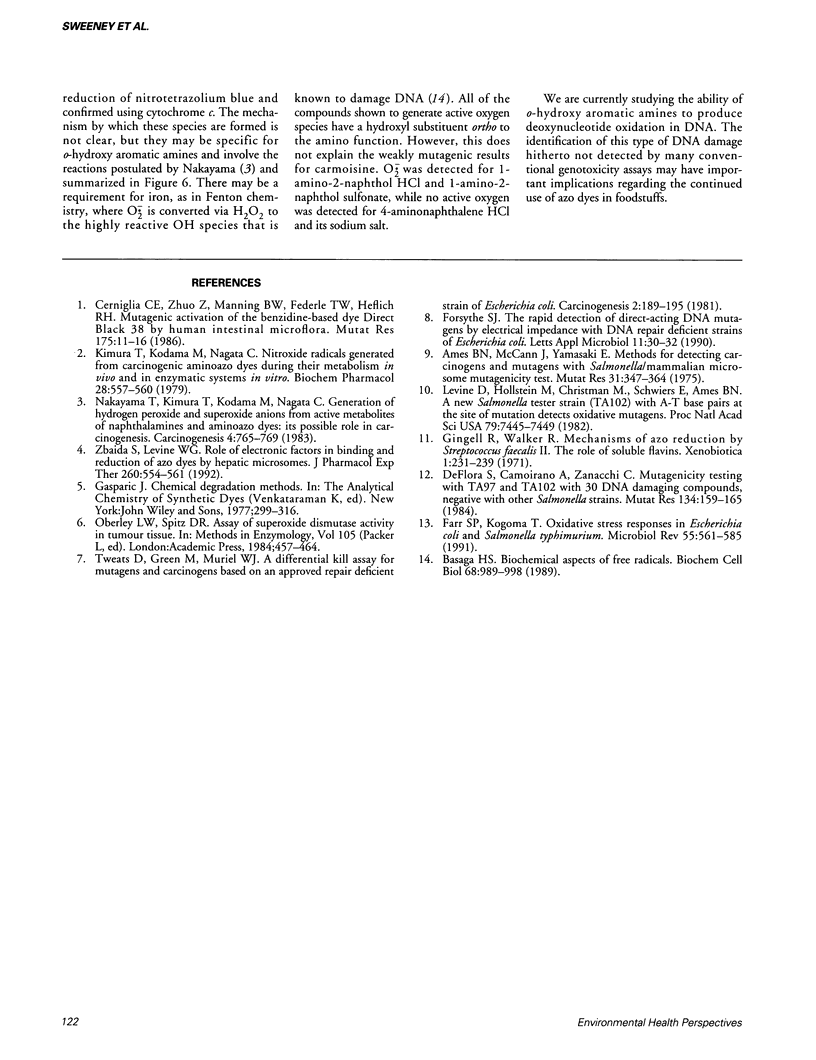Abstract
The intestinal flora forms a complex ecosystem that metabolizes dietary and endogenous nutrients under primarily anaerobic conditions. The ingestion of azo dyes has been proposed as one source of potential genotoxic agents. Many intestinal bacteria are able to reduce the azo bond (termed azofission), which liberates the substituted naphthol compounds. The standard Ames test has not demonstrated mutagenicity either by various common food colorings or by their reduced end products in Salmonella typhimurium strains TA98 and TA100. In contrast, genetic toxicity was demonstrated in the Escherichia coli differential kill assay and in S. typhimurium TA102 for the reduced dyes. The superoxide free radical was produced by the azo dyes only after reduction by the intestinal bacteria Enterococcus faecalis and Bacteroides thetaiotaomicron.
Full text
PDF



Selected References
These references are in PubMed. This may not be the complete list of references from this article.
- Ames B. N., Mccann J., Yamasaki E. Methods for detecting carcinogens and mutagens with the Salmonella/mammalian-microsome mutagenicity test. Mutat Res. 1975 Dec;31(6):347–364. doi: 10.1016/0165-1161(75)90046-1. [DOI] [PubMed] [Google Scholar]
- Basaga H. S. Biochemical aspects of free radicals. Biochem Cell Biol. 1990 Jul-Aug;68(7-8):989–998. doi: 10.1139/o90-146. [DOI] [PubMed] [Google Scholar]
- Cerniglia C. E., Zhuo Z., Manning B. W., Federle T. W., Heflich R. H. Mutagenic activation of the benzidine-based dye direct black 38 by human intestinal microflora. Mutat Res. 1986 Sep;175(1):11–16. doi: 10.1016/0165-7992(86)90138-7. [DOI] [PubMed] [Google Scholar]
- De Flora S., Camoirano A., Zanacchi P., Bennicelli C. Mutagenicity testing with TA97 and TA102 of 30 DNA-damaging compounds, negative with other Salmonella strains. Mutat Res. 1984 Sep-Nov;134(2-3):159–165. doi: 10.1016/0165-1110(84)90009-5. [DOI] [PubMed] [Google Scholar]
- Farr S. B., Kogoma T. Oxidative stress responses in Escherichia coli and Salmonella typhimurium. Microbiol Rev. 1991 Dec;55(4):561–585. doi: 10.1128/mr.55.4.561-585.1991. [DOI] [PMC free article] [PubMed] [Google Scholar]
- Forsythe S. J. The rapid detection of direct-acting DNA mutagens by electrical impedence with a DNA repair-deficient strain of Escherichia coli. Lett Appl Microbiol. 1990 Jul;11(1):30–32. doi: 10.1111/j.1472-765x.1990.tb00129.x. [DOI] [PubMed] [Google Scholar]
- Gingell R., Walker R. Mechanisms of azo reduction by Streptococcus faecalis. II. The role of soluble flavins. Xenobiotica. 1971 May;1(3):231–239. doi: 10.3109/00498257109033172. [DOI] [PubMed] [Google Scholar]
- Kimura T., Kodama M., Nagata C. Nitroxide radicals generated from carcinogenic aminoazo dyes during their metabolism in vivo and in enzymatic system in vitro. Biochem Pharmacol. 1979;28(4):557–560. doi: 10.1016/0006-2952(79)90254-5. [DOI] [PubMed] [Google Scholar]
- Levin D. E., Hollstein M., Christman M. F., Schwiers E. A., Ames B. N. A new Salmonella tester strain (TA102) with A X T base pairs at the site of mutation detects oxidative mutagens. Proc Natl Acad Sci U S A. 1982 Dec;79(23):7445–7449. doi: 10.1073/pnas.79.23.7445. [DOI] [PMC free article] [PubMed] [Google Scholar]
- Nakayama T., Kimura T., Kodama M., Nagata C. Generation of hydrogen peroxide and superoxide anion from active metabolites of naphthylamines and aminoazo dyes: its possible role in carcinogenesis. Carcinogenesis. 1983;4(6):765–769. doi: 10.1093/carcin/4.6.765. [DOI] [PubMed] [Google Scholar]
- Oberley L. W., Spitz D. R. Assay of superoxide dismutase activity in tumor tissue. Methods Enzymol. 1984;105:457–464. doi: 10.1016/s0076-6879(84)05064-3. [DOI] [PubMed] [Google Scholar]
- Tweats D. J., Green M. H., Muriel W. J. A differential killing assay for mutagens and carcinogens based on an improved repair-deficient strain of Escherichia coli. Carcinogenesis. 1981;2(3):189–194. doi: 10.1093/carcin/2.3.189. [DOI] [PubMed] [Google Scholar]
- Zbaida S., Levine W. G. Role of electronic factors in binding and reduction of azo dyes by hepatic microsomes. J Pharmacol Exp Ther. 1992 Feb;260(2):554–561. [PubMed] [Google Scholar]


